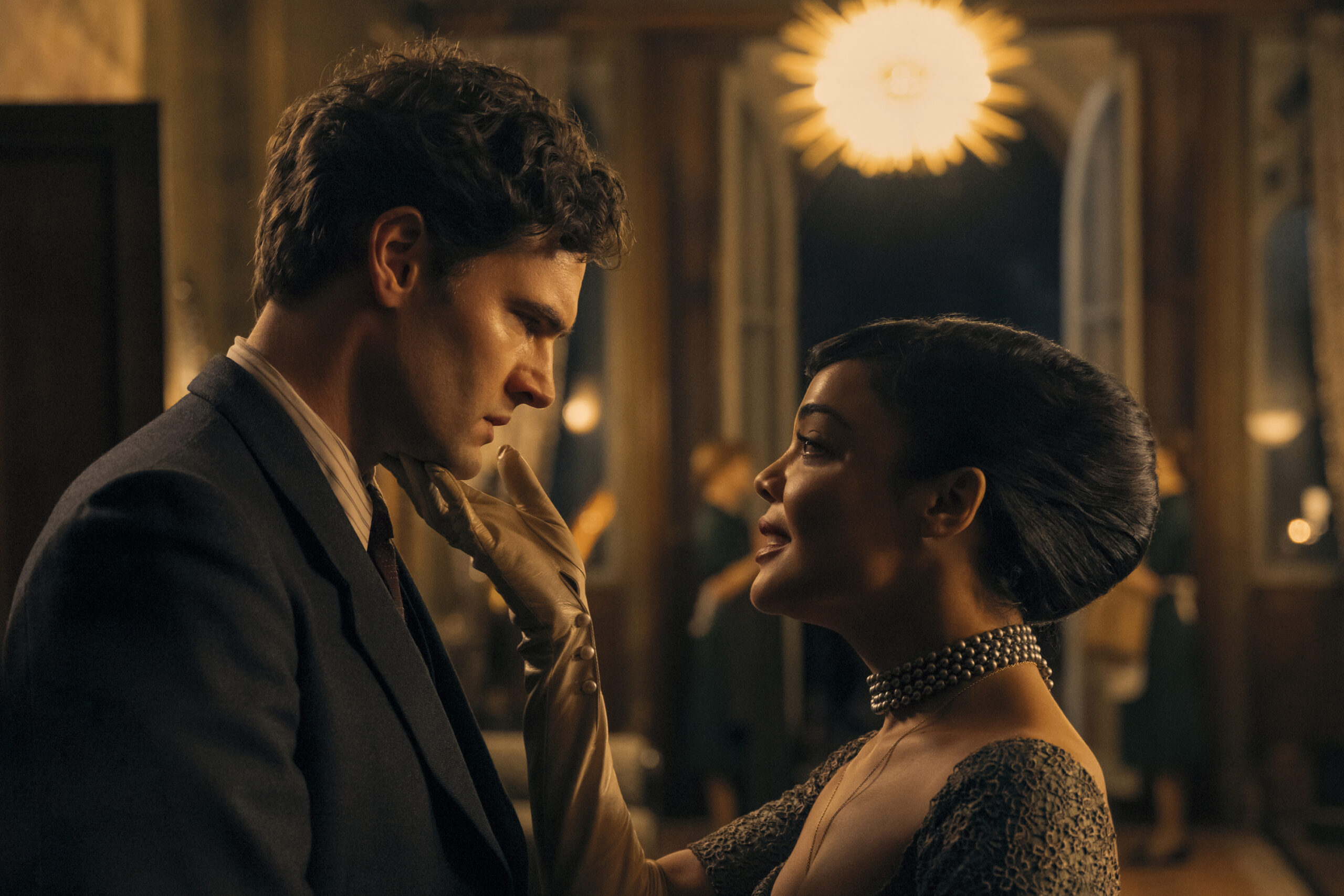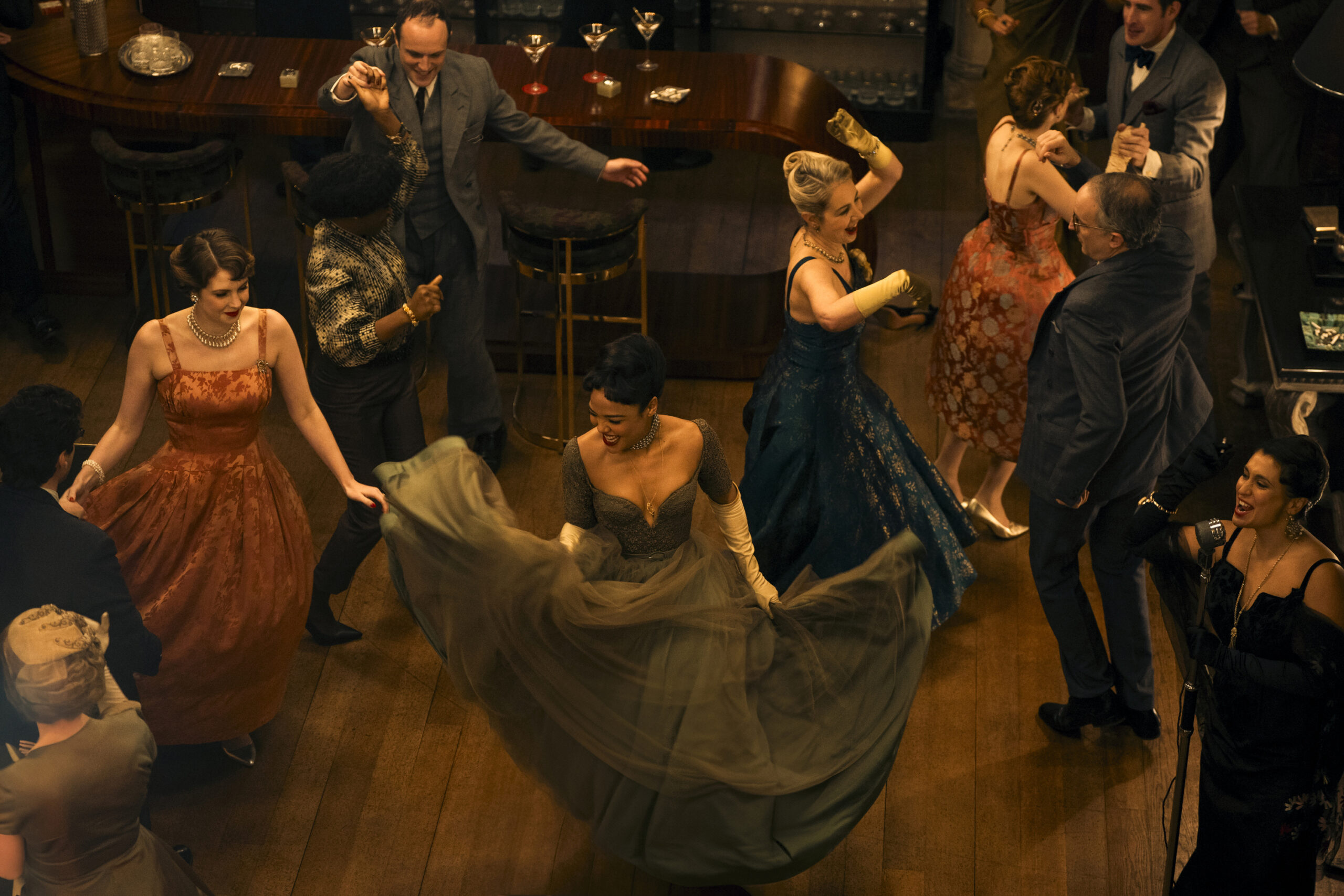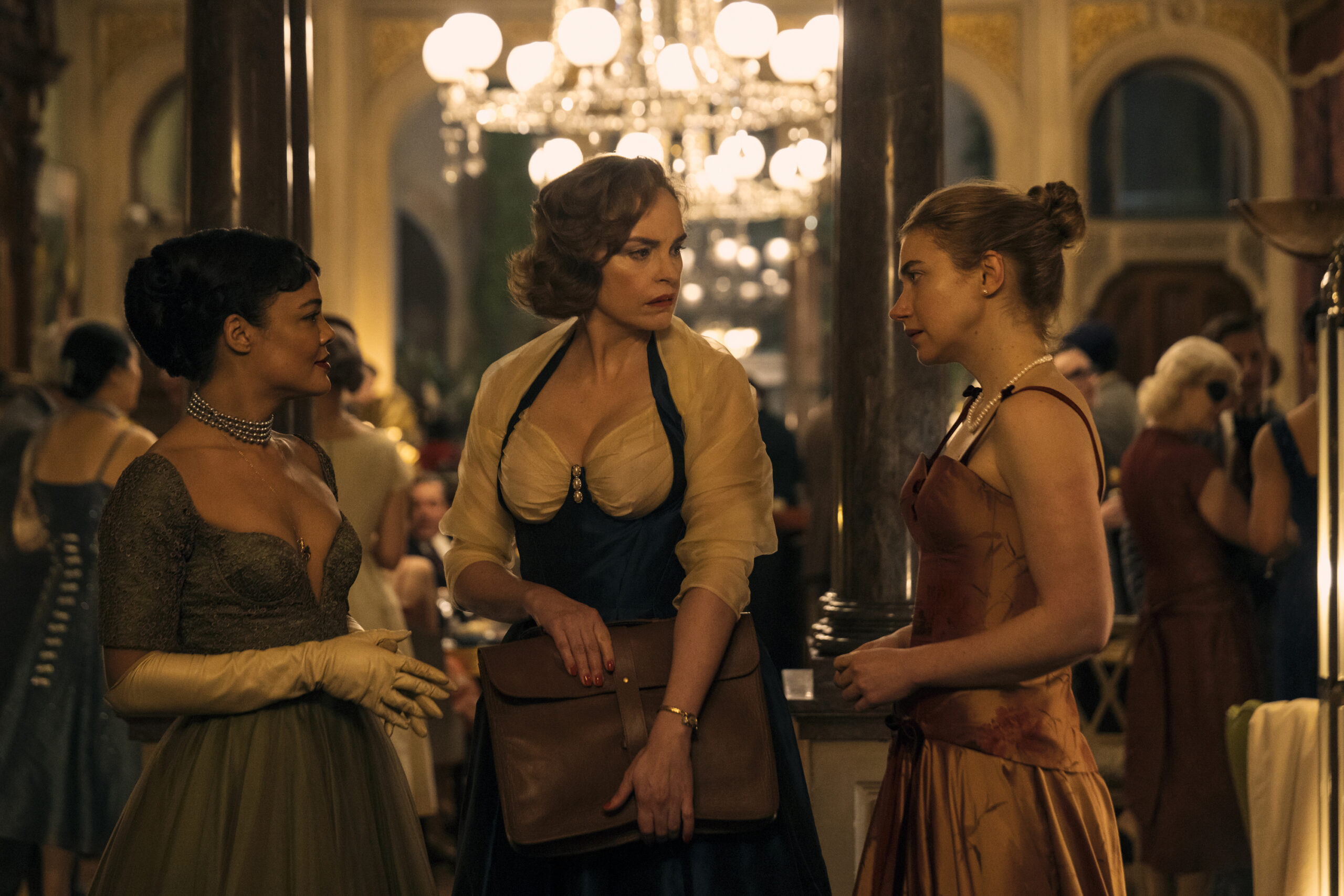Nia DaCosta is difficult to define. A Black woman director who has established herself as a big-budget filmmaker, in her still early career, she’s creatively moved through genres and worked on different scales without firmly staying in a single sphere.
Her debut feature, “Little Woods,” for instance, was an intimate crime Western starring Tessa Thompson and Lily James that effortlessly instilled a spirit of sisterhood in a story about economic depression. DaCosta then parlayed her debut’s success into directing the Jordan Peele-produced, Chicago-set horror sequel “Candyman” before quickly jumping onto the comic book landscape by helming “The Marvels.” Next year, she’ll return to the horror space when she helms the “28 Years Later” sequel, “28 Years Later: The Bone Temple.” Before then, however, is her catty and queer high society dramedy “Hedda.”
Produced by Amazon MGM Studios, the stylish and bold “Hedda” is an adaptation of Henrik Ibsen’s 1891 play Hedda Gabler. It’s also a return by DaCosta to the kind of character-based storytelling that “Little Woods” foretold.
“Hedda” stars Tessa Thompson as the titular socialite, whose cunningness is tested on a single night when her old flame Eileen Lovborg (Nina Hoss), an academic who also happens to be applying for the same teaching position as Hedda’s hapless husband George Tesman (Tom Bateman), arrives at her party brandishing her new book and devoted partner Thea Clifton (Imogen Poots). Set in the opulent yet repressed milieu of 1950s England—one of DaCosta’s many sharp adaptive choices—the film’s sophisticated sense of fashion, art, and interior design make for a sharp juxtaposition with the fractured and cutting jockeying happening underneath its resplendent exterior.
DaCosta and Thompson offer a complex portrayal of a Black woman whose position and place are perpetually questioned, to the point of Hedda’s own unknowability. The character’s personal ambiguity, therefore, ignites a questioning of her intellectual and financial ambitions in the face of her sexual desires for a visually controlled film filled with lustfulness and pettiness that touches on racism, homophobia, and sexism without ever overworking its thematic aims. With Thompson in what might be the best performance of her career, “Hedda” is the kind of film made by a battle-tested director fully inspired by the opportunity to put her recent experience to new use.
On the day DaCosta received the Black Perspectives Artistic Achievement Award from the Chicago International Film Festival, I spoke with her in person about allowing Black women to be unlikable, retooling an Ibsen classic, reality television, and her interest in class.

In your career you’ve shown so much flexibility with regard to switching between genres and projects of different scales, from intimate indies to big budget comic book movies, as an artist, what do you find helpful about having that flexibility rather than staying in one mode?
I really just like doing different kinds of things, but I guess what is helpful is that you learn things that you don’t think can apply to other genres. Going into a Marvel film, for example, you basically have 80-day shoots for main photography and principal photography, not including second unit—you have to control and coordinate so many things across so many departments with so much cast and crew. After a while, whatever is instilled in you, in terms of your way of shooting or approaching a day, you just know what it is.
Because you’ve worked at such a high level—it’s such a stupid amount of money those movies get made with—you start to understand different pathways and different ways of making a film. What you learn, going from the indie world into those big-budget movies, is that you can bring the real emotionality, nuance, and complexity of a character into a world that can sometimes forget that that’s important.
Was there a specific area in “Hedda” that you brought that experience to?
Well, “Hedda” was distinct because I hadn’t made a film that I’ve written since my first film, “Little Woods.” “Little Woods” I made with an amazing crew, but we were all on our first, second, or third movie. With this film, a lot of my crew came with me from “The Marvels.” My first time working with Sean Bobbitt was with Marvel. My first time working with Lindsay Pugh was on Marvel. All those people came onto this film and took a lot less money because we just had such a great time working together. I think we also learned how to maintain control of a set and keep things moving. Because the biggest thing you’ve got to know is that you’re going to figure it out.
I think that’s one of the things that keeps my stress level pretty low. I mean, you’re always stressed when you’re making a film, but I didn’t have excess stress here. Because I think when you go through Marvel, it’s the craziest, biggest, wildest version of making a film, when you do do something like this that’s really intimate and personal with a script that’s not going to change, unless you’re in rehearsals, you know it’s a thing you can hold in your hands. So I think the rigor with which you approach a bigger film really helps with the smaller film.
I’ve read that you’d done a lot of rehearsals for the film. There are so many oners and some wonderful focus pulling that requires some intricate blocking. Did you set that movement with the actors during rehearsals?
A big thing for me with actors that I’ve realized over my short career is that many of them feel like they have no agency. Many of them aren’t actually that comfortable with just delivering some stuff and seeing what happens at the premiere. They really want to feel like part of the creative process. And sometimes actors will act out because they feel like they’re being ignored or left out of the process.
For me, I always try to cast really smart, creative actors so that when we get to rehearsals, I can invite them into the process. That’s when I open the script. I’m not interested in ad-libbing things on set unless we’ve already gotten what we need. But in rehearsals, I’m like: This is what it is, but what else can it be? This isn’t sitting right in your mouth; this doesn’t make sense to you; do you want to add this idea? Cool. Let’s talk about it. We do all of that in rehearsals so that on the day when we’re shooting, the script is the script.
But Sean and I really wanted to block the film before we got to the shoot because we knew we wouldn’t have a ton of time. It was a 35-day shoot. And although it’s not a huge script, we wanted to be as prepared as possible by having the actors be prepared. So we would rehearse in spaces with the furniture, and if we didn’t have the furniture, we taped it out. That’s a super important part. That is, just making sure that we’re all together, trying to figure out what this is going to be while also sticking to the vision I have in my head.
Was that kind of preparation always part of your approach, or did working on big films instill that?
I’ve always been a rehearsal person and a blocking-a-rehearsal person. But I think that came from when I got my Master’s in the UK, and while working in theater, because so much of that creation is collaborative. The writers, the directors, and the actors are there, and they’re figuring it out together. That was really inspiring and fulfilling to me.

You talked to a few actresses who previously played Hedda. How did those conversations help you to make this character your own?
I spoke to two or three actresses who played Hedda. But my favorite part was that everyone feels differently about Hedda, including the women who played her. One said: I find Hedda incredibly kind. I said that to another one, and she was like: What are you talking about? I love that. That’s what makes this character so fascinating and why she resonates today. Which actually made me braver. The fact that these women embodied this character and learned so much about her, taking her inside themselves, even though they couldn’t find a single way to think about her or an answer to her. So, I thought that’s who Hedda is; let’s not force an answer, which would be quite disingenuous. Let’s be true to what the spirit of the play is.
She’s so… complex.
Giiiiiiirl. She’s woooh.
You rarely see Black women who could be considered unlikable as the protagonist.
I don’t know if you feel this while watching and writing about film and media in general, and this is just a cultural thing too, we as Black people are so afraid of being seen in a negative light because of how high the stakes are for our livelihoods. We know how real the general perception of us can be if we’re seen as negative, violent, or lazy, or whatever—it has real-world consequences. Subsequent to that, the way we are told to portray ourselves in media is very particular, especially with the unwritten rule that we shouldn’t say such and such in mixed company. But I think it limits us.
I often think about how to define freedom. Is freedom not being our true, complex, beautifully dynamic, messy, generous, and amazing selves to live in a way that still puts us under the boot of oppression? I’m committed to presenting complex Black women on screen, especially Black women behaving badly. I find that very important, which is funny because I really value kindness and generosity. But I also like to challenge the viewer. We don’t need to be elegant, dignified, strong, or all those things. We can also be messes. We can also be wrong instead of just being some approved characteristics.
Conversely, “Little Woods” is such a powerful film about sisterhood, and “Hedda” is the total opposite.
Yeah, this is not that. These sisters are not together.
But you know what’s interesting? For the central Black woman in both works, we’re concerned with her isolation. In both films, she’s in predominantly white spaces, which is something that I’m really fascinated by, you know, as someone who was educated in predominantly white institutions. You have to figure out how to be your own person while getting all these different messages about who you’re supposed to be. That’s something that’s fascinated me. I think that’s something that more than anything else connects us to films, actually.
Speaking of spaces, I noticed that many of the characters are often framed by artwork of Hedda’s home. Could you talk about accumulating that art and what artistic style you were searching for?
Sean, my production designer, Cara Brower, and I were all clear from the beginning that this cannot feel like your mom’s 1950s movie. It can’t feel like how we think the 50s were. It has to be like how they actually were. Something that I kept coming back to was that Salvador Dali, that crazy old man, was making art at this time. The Cubists are out there; the Modernists; avant-garde jazz musicians. Let’s represent the fact that this woman, Hedda, would be in tune with all of that stuff, and that’s what would be in her house as opposed to 1765 portraits of old women.
She would have been engaging in the world. Her portrait in the dining room, which is now in my dining room, was really important to me because I wanted a kind of Cubist portrait to show this fractured, slightly demented vision of her placed in a prized position. I wanted it to feel like she was looking over everyone at the various moments they’re in the dining room. Those were all painted by an artist named Thomasina Smith.

The comedy in this is so good, too. So much of it is in the edit and in the charged line deliveries. I’ve seen at least one person compare it to “Real Housewives.”
It’s so funny, with regard to “Real Housewives” because I genuinely don’t know anything about that. There are so many now that I can’t even start watching. My friend rattled them off: Salt Lake City, Atlanta, New York, Beverly Hills, Orange County. I can’t. There are too many now. Do you watch it?
No. But I do like reality television as a way to shut off my brain for a while. I love “Catfish.”
My reality viewing is more like “The Great British Bake Off,” “The Great British Sewing Bee,” cooking shows, and pottery shows.
Do you watch the holiday baking shows?
I always start one, and I’m like: I can’t do this anymore. But the one I really loved was “Nailed It!” That one really soothed my soul.
I honestly had a similar reaction to watching Nina Hoss as Eileen in this film. She has so many great line readings that feel soul-soothing.
When Nina saw the movie, she was like: Sometimes I just had to laugh at this crazy lady, Eileen.
The gender flipping here from the original play is so inspired. What caused that decision?
I really wanted the movie to explore the female energy of the play, or at least Hedda’s perspective as a woman in a society trying to figure out who she wants to be, or even what she wants to be. Thea is a great foil to her in the play, but I wanted to bump her character up a bit, so I started to think about the Eilert character. He just makes more sense as a woman because the whole play he’s like: I’m brilliant, but no one sees me. No one understands me. I’m at risk of losing everything because of my alcoholism and depression. I thought: Well, if you were a woman, I could really see how torturous that would be and how painful it would be for no one to listen to you.
Flipping him into being a woman then strengthens what Hedda is going through because the movie’s also about bravery and cowardice and what freedom is. How do you get freedom? How do you approach power? Hedda is told by Eileen: You could be me. Look at what I did. In a way, Hedda wants to show Eileen how easily that can go away.
That’s one of the many brave adaptive choices you made here. There’s also the decision to set this in 1950s England. Why then and there?
Because I took away some of the framework of the play, like Aunt Julian and George spending 20 minutes talking about Hedda, I wanted to ratchet up the environment of repression. England, of course, is very repressed [Laughs] and in the 1950s they were super repressed [Laughs]. That’s what’s so interesting about the 1950s. I could have done the Victorian era, but that felt a little too far in the past, even though they were repressed as hell. For me, the 1950s, coming after World War II, which was this horrific wound, are an era I’m really fascinated by because I think we’re still living in the postwar era. To me, society’s trying to heal and figure out how to find a semblance of equilibrium again after this mindlessly violent period.
In the 1950s, there was this desire to return to normalcy. Ladies, thank you so much for working, the men are here now and we need them to go back to work. So, all these men are forced back into this structure, which doesn’t really suit them either. Many of them are traumatized, but some of them would’ve probably preferred to stay home with the kids. Even now, we judge men who want to be stay-at-home dads. Meanwhile, the women who are given this new sense of freedom, this new sense of access, are then told, Never mind, thank you,” that their freedom can be taken away at any time. Afterwards, of course, the 1960s came roaring, but I thought that decade might be too much of a tinder box to set the film in.
I wonder how much crazier this would be if this were set in the 1960s.
Well, in the 1960s, it would’ve been like: Hedda, girl, just go fucking be a beat poet or whatever. Go travel to Harlem.
Well, in the 1950s, you still got the class element, which is fascinating. “Little Woods” is about class, but it’s about the economic fringes, whereas class here is defined in terms of gender. What interests you in class?
So much of the play is about class. Hedda’s father is this great general, but she’s his legitimate daughter. She’s Black. She never talks about her mother, her Black parent. She feels entitled to the access her father had, along with the social recognition and entitlements she would have as his legitimate daughter. At the same time, she’s so bored with middle-class people. I think that, especially in England, the idea of being middle class and being ambitious and yearning to improve your position is seen as a little bit tacky. So, I thought that would be really interesting for her.
I also find it really fascinating because I think in England, in particular, they very much say they’re all about class, not about race. Of course, that ignores that race can be a huge signifier of class. Also, race and class intersect completely. So, it was all like this beautiful sort of hodgepodge that made perfect sense for my transliteration.
from Roger Ebert https://ift.tt/fwyElKr

.png)
.png)

